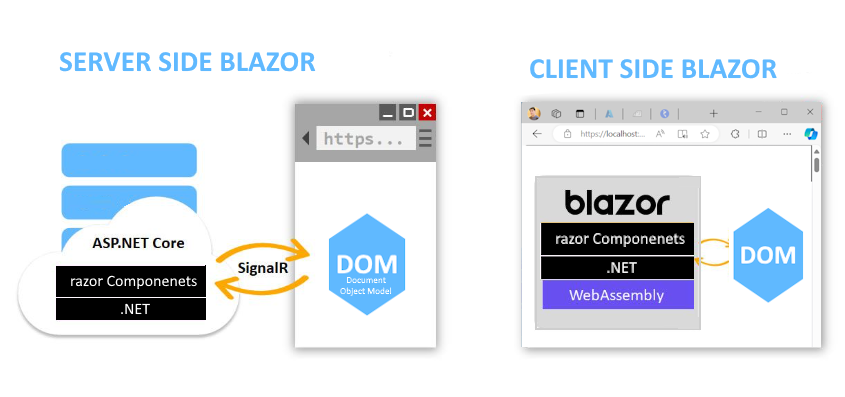
What is a Markup LanguageAnything added to a text document that conveys an extra information. Markup languages are the languages that build the web.. That is, if we want to display a word in some format like bold,underline... we use the corresponding markup tags for that particular word. Thus markup describes exactly how the document should appear on the screen or during in report processing. Markup is being used extensively not in computing world but also in electronic documents.There are two types of markup and hence there exists two types of markup languages. They are procedural and generalized. Procedural Markup Languages- Procedural markup is typified by its use in typesetting and publishing systems, including word processors.Generalized Markup Languages (GML) -There is a major shortcoming in the procedural markup languages. That is, if we intend to extract information from the documents, procedural markup language is found wanting. To meet this challenge, a generalized markup language marks up documents in a different way. The characteristics of these languages are:1. The elements have logical names, rather than expressing detailed formatting instructions. For example, an element H1 is being used to mark up text that is intended to be a first-level header. 2. Software applications that read documents marked up using a GML are free to present them as they see fit, using formatting rules for particular elements that are either defined internally, or specified elsewhere. When displayed in the screen, the H1 element could be associated with a particular combination of font size and weight. GML elements usually involve both start and end tags so that the original content is fully contained inside an element. Also there is no hint about how this document should be presented. That is, the web browsers are free to reflect the meanings of these elements. The most commonly used generalized markup language is HTML for web documents and WML for mobile contents. |
Recently another markup language called as Extensible HTML (XHTML) for future web publishing came out. XHTML is a reformulation of HTML 4 in XML. XHTML has to be designed to avoid some undesirable features of HTML.
Though all these features can be accomplished easily using XML, XHTML has been formulated for keeping the large investment made in HTML.
Below is the list of markup languages :-
- Application Markup Language (AppML)
- Architecture Description Markup Language (ADML)
- Artificial Intelligence Markup Language (AIML)
- ASN.1 Markup Language (AML)
- Astronomical Instrument Markup Language (AIML)
- Astronomical Markup Language (AML)
- Automatic Site Markup Language (ASML)
- Bean Markup Language (BML)
- Better Markup Language (BML)
- Bibliography Markup Language (BibML)
- Bioinformatics Sequence Markup Language (BSML)
- BIOML - BIOpolymer Markup Language
- Board Game Markup Language (BGML)
- Business Rules Markup Language (BRML)
- Comics Markup Language (ComicsML)
- Chemical Markup Language( CML)
- Claris Dynamic Markup Language (CDML)
- DARPA Agent Markup Language (DAML)
- Description Logic Markup Language (DLML)
- Directory Services Markup Language (DSML)
- Document Template Markup Language (DTML)
- Dynamic Hypertext Markup Language (DHTML)
- Dynamic Markup Language (DML )
- E-business eXtensible Markup Language (ebXML)
- Earth Science Markup Language (ESML)
- Environmental Markup Language (EML)
- Financial Products Markup Language (FpML)
- eXtensible Application Markup Language (XAML)
- eXtensible rights Markup Language (XrML)
- eXtensible Telephony Markup Language (XTML)
- eXtensible Graph Markup and Modeling Language (XGMML)
- eXtensible Hypertext Markup Language (XHTML)
- eXtensible Markup Language (XML)
-
FAQ
- Farleden Dynamic Markup Language
- Field Data Markup Language (FDML)
- FileMaker Dynamic Markup Language (FDML)
- Financial products Markup Language (FpML)
- Financial Services Markup Language (FSML)
- Forms Data Markup Language (FDML)
- Form Document Markup Language (FDML)
- Forms Definition Markup Language (FDML)
- Forms Markup Language (FML)
- Gene Expression Markup Language (GEML)
- Geometry Description Markup Language (GDML)
- Geography Markup Language (GML)
- Graffiti Markup Language (GML)
- Handheld Device Markup Language (HDML)
- Hypertext Markup Language (HTML)
- Human Markup Language (HumanML)
- Human Resources Markup Language (HRML)
- ICAAP eXtended Markup Language (IXML)
- Image Markup Language (IML)
- Instrument Control Markup Language (ICML)
- Instrument Markup Language (IML)
- International Development Markup Language (IDML)
- Java Speech Markup Language (JSML)
- Karst Markup Language (KML)
- Koala Bean Markup Language (KBML)
- Lambda Markup Language (LML)
- Learning Material Markup Language (LMML)
- Legal Extensible Markup Language (LegalXML)
- Liturgical Markup Language (LitML)
- Log Markup Language (LOGML)
- Mail Markup Language (MML)
- Maker Markup Language (MML)
- Market Data Markup Language (MDML)
- Mathematical Markup Language (MathML)
- Meaningful Text Markup Language (MTML)
- Medical Markup Language (MML)
- Mind Reading Markup Language (MRML)
- Modest Markup Language (MML)
- Multimedia Retrieval Markup Language (MRML)
- Music Markup Language (MML)
- Outline Processor Markup Language (OPML)
- Opera Binary Markup Language(OBML)
- Pet Name Markup Language (PNML)
- Procedural Markup Language (PML)
- Predictive Model Markup Language
- Printing Industry Markup Language (PrintML)
- Question and Answer Markup Language (QAML)
- Quest Markup Language (QML)
- Relational-Functional Markup Language (RFML)
- Research Information Exchange Markup Language (RIXML)
- Rule Markup Language (RuleML)
- RESTful API Markup Language (RAML)
- Security Assertion Mark-up Language (SAML)
- Security Services Markup Language (S2ML)
- Simple Markup Language (SML)
- Simulation Module Markup Language (SiMMaL)
- Spacecraft Markup Language (SML)
- Standard Generalized Markup Language (SGML)
- Synchronization Markup Language [SyncML]
- Synthesis Markup Language
- Systems Biology Markup Language (SBML)
- Theological Markup Language (ThML)
- Transaction Authority Markup Language (XAML)
- Trading Partner Agreement Markup Language (TPAML)
- Textile markup language (TML)
- Transaction Authority Markup Language (XAML)
- Turing Machine Markup Language (TMML)
- Tutorial Markup Language (TML)
- ThML: Theological Markup Language
- Universal Rule Markup Language (URML)
- Virtual Reality Markup Language (VRML)
- Voice Extensible Markup Language (VoiceXML)
- Why Markup Language (YML)
- Wireless Markup Language (WML)
- Yet Another Markup Language (YAML)



No comments:
Post a Comment